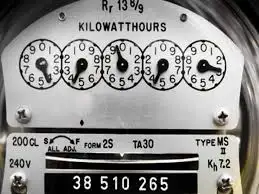Emissions, safety top concerns at CNSC hearing
PORT HOPE, ONTARIO - On the first day of Cameco's relicensing hearings at Town Park Recreation Centre, 17 people appeared as intervenors, presenting arguments about Cameco and it's place in Port Hope. Another 57 are expected.
Cameco's emissions and fire protection were prominent topics discussed. This is the second phase of relicensing hearings for the uranium conversion facility located on Eldorado Drive. Cameco is seeking a five-year licence renewal from the Canadian Nuclear Safety Commission (CNSC), the federal regulating body. The CNSC tribunal is in Port Hope for the hearings.
The company has had success reducing emissions from its uranium hexafluoride (UF6) facility stacks in recent years, Cameco vice president Bob Steane told the tribunal.
Recalculation of "fugitive emissions" - emissions escaping the facility, but not through the stacks - has resulted in the company reporting higher emissions, he said. But actual emissions have not increased.
Cameco will now focus on reducing the amount of fugitive emissions released from the facility, Mr. Steane said.
The company plans to develop a comprehensive emission reduction strategy in 2007. This will involve studies and community consultation, he said.
Overall emissions are fractions of regulatory limits, Mr. Steane said. The plant's performance has improved as a whole, he said.
"Cameco is proud of it's performance over the current licence period," Mr. Steane said.
Commissioner Dr. Christopher Barnes pointed out the company significantly reduced emissions from its facility from 1996 to 1999, however, uranium emission levels have remained roughly the same over the current five-year licence period.
"Over the lifetime of the last licence, why was there no reduction in emissions?" he queried.
He asked if Cameco has set emission reduction targets over for the proposed five-year term.
Mr. Steane said the company has focused on the UF6 stack in the past and continued to do so during the current licence term.
The new fugitive emission calculations have brought to light a new priority, he said.
"That will be an area we will be targeting," he said.
Cameco will focus on reducing all emissions, rather than focusing solely on uranium emissions during the next term, Mr. Steane said.
United Steelworkers of America Local 13173 president Chris Leavitt spoke in support of his company and the union's role in its improvement.
"I can ensure you that Cameco has consistently met all regulatory requirements and we as a union will continue to work diligently to make sure that all acts of safety as it relates to the employees, the community or the environment are met."
Families Against Radiation Exposure (FARE) president John Miller said he is not pleased with Cameco's uranium emissions, which have been on the incline since 2002, except for 2004 when a labour shortage hindered production.
A total of 117 kilograms of uranium was emitted in 2005, he cited, compared to 102 kilograms in 2002.
FARE is calling for the CNSC to grant a two-year licence, as opposed to the proposed five-year, he said.
"What we want is a goal of zero emissions and a time table for reaching that," Mr. Miller said.
He said FARE wants a condition in the licence requiring yearly targets for cutting uranium, hydrogen fluoride, ammonia and nitrous oxide emissions and that those deadlines be enforced by regulatory action if not met.
Rod Anderson, president of Environmentalists for Nuclear Energy's Canadian branch, told commissioners he thinks the expectation of zero emissions is unreasonable. He stressed the importance of nuclear energy as a method of reducing output of greenhouse gasses. "I am not expert enough to comment on the change in methods for estimating uranium emissions and the comparison between stack and 'fugitive' emissions," he said. "I would simply observe Cameco emissions are a tiny fraction - about five per cent - of the regulatory limit and that arguing for zero emissions is like demanding the company make omelets without breaking any eggs."
Fire protection was also a heated topic. CNSC staff gave the subject a 'C' rating - Cameco's lowest safety area rating - in their report to the commission. The safety area is improving, however, the staff concluded.
Port Hope fire chief Frank Haylow was on hand to answer questions.
Dr. Barnes asked how long it would take Port Hope's volunteer fire department to respond to a "major fire."
It would take the fire department about three minutes to get the first truck onto the road and two minutes more to get to the Cameco facility, Chief Haylow said. The Ontario Fire Marshal recommends 10 firefighters respond in the first 10 minutes to a house fire.
Port Hope Fire Department would have to send trucks for two of its three stations to initially send more than 15 people to a fire, which could take 12 to 13 minutes, Chief Haylow said.
Significant improvement between PHFD and Cameco's emergency response team (ERT) has occurred in the last year, he said. But improvement is still needed.
When asked if PHFD is appropriately resourced to handle a major fire at Cameco, Chief Haylow responded "the answer would probably be no." Chief Haylow said Cameco's 48-member ERT is catching up in training. "I'm confident as we go down the road that their ERT will be as well trained as our people," he said.
In the event of a "major fire" Port Hope would have to call in mutual aid. First response would likely come from Cobourg, followed by Hamilton Township's Bewdley department.
Mr. Steane said Cameco's ERT is capable, competent and able to take care of incidents within the facility.
Cameco emergency response coordinator, Tyler Rouse, said about 20 ERT members are on site at any given time during the day and six are on site during evenings and weekends. In the event of an incident, others are paged in.
ERT members are trained to NFPA 472 hazardous materials standards and all are trained to fight interior and exterior fires.
Commissioner Alan Graham asked whether Cameco is prepared to provide resources to PHFD.
Mr. Steane said the company is working with the municipality to provide training so PHFD will be able to support Cameco's ERT.
John Morand, appearing as an intervener, said Port Hope does not have enough firefighters or resources to deal with serious issues.
An environmental assessment into building the UF6 facility - dated 1977 to 1981 - required an on-site fire service staffed with 22 full-time firefighters, Mr. Morand said.
Mr. Graham asked CNSC staff if they believe adequate protection can be provided in the event of a "major disaster."
CNSC project officer Marty O'Brien said the combined ERT and PHFD provide adequate protection.
Cameco's team is first into an incident and PHFD provides backup, he said.
Mr. Rouse said the ERT is trained to mitigate hexafluoride leaks and can respond to anything that comes up.
Related News

Washington Australia announces $600 electricity bill bonus for every household
PERTH - Washington Premier Mark McGowan has announced more than a million households will receive a $600 credit on their electricity account before their next bill.
The $650 million measure will form part of Thursday's pre-election state budget, which has been delayed since May because of the pandemic and will help deflect criticism by the opposition that Labor hasn't done enough to stimulate WA's economy.
Mr McGowan made the announcement on Sunday while visiting a family in the electorate of Bicton.
"Here in WA, our state is in the best possible position as we continue our strong recovery from COVID-19, but times are still…




